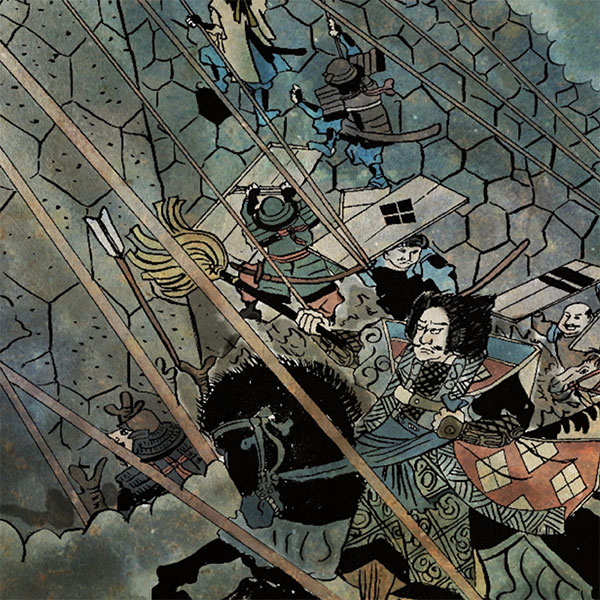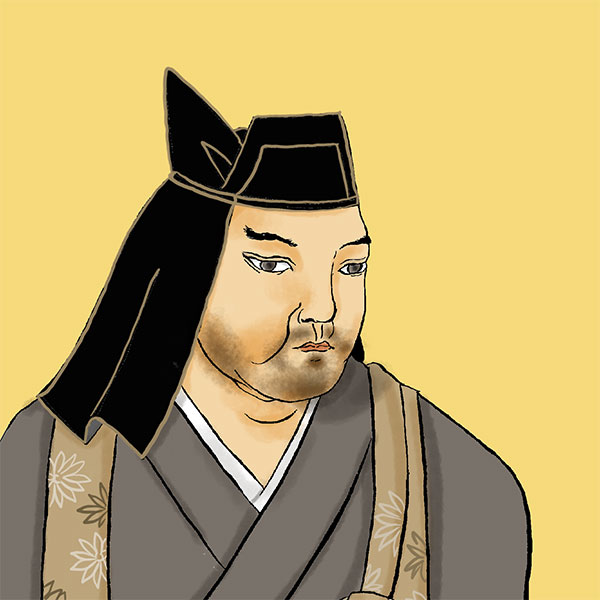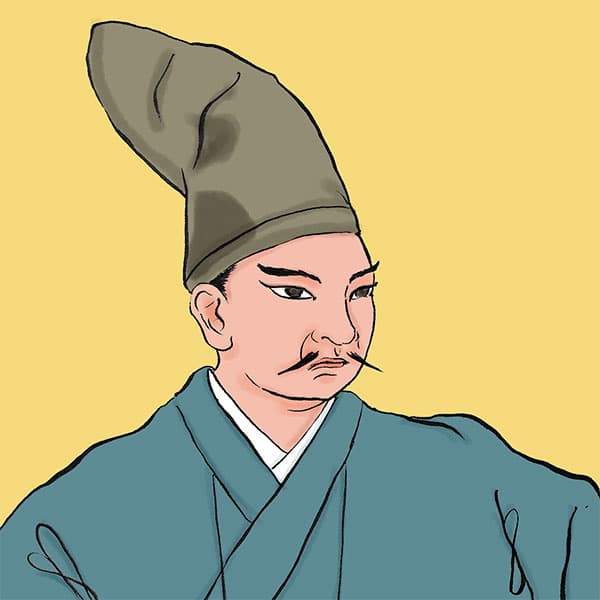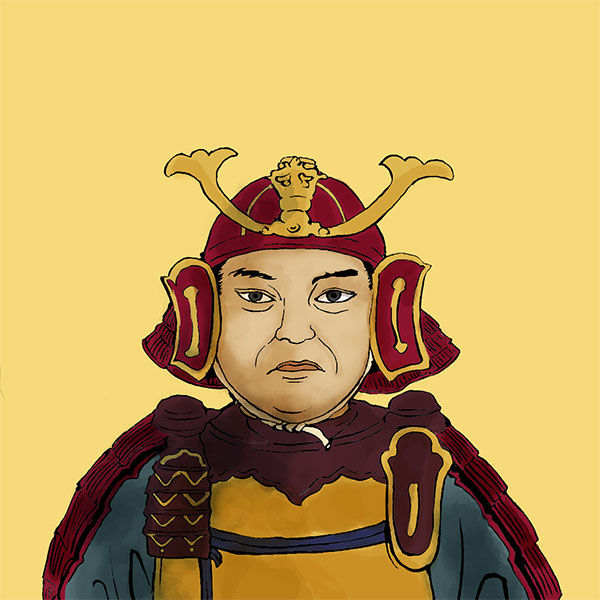Odate Rebellion (2/2)Kenshin Uesugi's successor battle: Kagetora vs. Kagekatsu

Odate Rebellion
- Article category
- case file
- Incident name
- Odate Rebellion (1578-1580)
- place
- Niigata Prefecture
- Related castles

Nagaoka Castle

Numata Castle
- people involved
Military strength: unknown - The majority of Kenshin's close aides and hatamoto, including Nobutsuna Naoe, Tomonobu Saito, and Nagachika Kawata.
- Large powerful families such as Shibata Shigeie and other powerful families in the Kaetsu region, ``Yohokushu''
- Kenshin's adopted children, Masashige Kamijo and Kunikiyo Yamaura
- In addition, Joetsu, centering on Kasugayama Castle, Uonuma/Mishima, the home of scenic beauty, and most of Agakita.
Military power: 6000 or more - Kenshin's hatamoto and aides include former Kanto Kanrei Norimasa Uesugi and the Uesugi clan, influential members of the Uesugi family such as Hojo Takahiro and Kagehiro, Honjo Hidetsuna, Kamyo Chikatsuna, and others.
- Ayukawa and Kurokawa clans of ``Yohokushu'' (because there were opposing factions on Kagekatsu's side)
- The Hojo clan and the Hojo clan's allies, the Takeda clan, the Date clan, and the Ashina clan.
Odate Rebellion ③ Kagetora attacks Kasugayama Castle from Odate Castle
On May 5th, there is a fight between Keikatsu's side and Kagetora's side, and at Kasugayama Castle, there is a battle between Kagekatsu's Honmaru and Kagetora's Sannomaru. On May 13th, Kagetora moved from Sannomaru to Otate Castle (Joetsu City, Niigata Prefecture), the mansion of Norimasa Uesugi, and Kagetora's forces arrived one after another at Otate Castle, solidified its defense, and prepared to siege the castle. I will do This Otate is the origin of the name ``Otate no Rebellion.''
The palace was a flat castle surrounded by a moat about 20 meters wide, and consisted of five walls. By making this a base, they were able to control the nearby port of Naoetsu as a distribution base, which also led to the economic blockade of Kagekatsu.
Kagetora also requested relief from Odawara Castle, where the Hojo clan was located. Furthermore, they attacked Kasuga Castle on May 17th and 22nd, but were unable to capture it.
Otate Rebellion ④ Gained the upper hand with the help of Kagetora, the Hojo clan, etc.
The Hojo clan received a request for relief from Kagetora, but at the time of the Otate Rebellion, Hojo Ujimasa and Ujiteru fought with the anti-Hojo coalition including Yoshishige Satake and Kunitsuna Utsunomiya in the Battle of Ogawadai in Kinugawa (Kinugawa) in Hitachi Province (Ibaraki Prefecture). In the midst of. They cannot send troops to help Kagetora. Therefore, he requests his ally Katsuyori Takeda to help Kagetora. In late May, Katsuyori Takeda received the request and deployed a large army of approximately 20,000 men, led by his cousin Nobutyo Takeda, near the border of Shinano Province, and prepared to help Kagetora.
Furthermore, Kagetora seems to have requested relief from the Ashina clan and the Date clan, and both armies invaded Echigo Province. Keikatsu manages to stop the attack, but must have felt that he was in serious danger. In this way, Kagetora's side had the upper hand in the early stages of the Otate Rebellion.
Odate Rebellion ⑤ Takeda suddenly becomes neutral
However, in June, Kagekatsu's side began negotiations for peace with Katsuyori Takeda. He succeeds in making peace with Katsuyori by proposing the gold and silver that Kenshin inherited from Kasugayama Castle, the cession of the Ueno-Numata territory of the Uesugi territory, and the marriage of Kagekatsu to Katsuyori's younger sister, Kikuhime. In short, Katsuyori, who was struggling financially, accepted peace with Kagekatsu, although he had to pay his bills. In this way, Kagekatsu and Katsuyori concluded the Koetsu Alliance on June 12th. Although Katsuyori did not take Kagekatsu's side and was positioned as a ``neutral'' member, he later deepened his relationship with Kagekatsu. Katsuyori's younger sister, Kikuhime, married Kagekatsu in July (some say October), 1986.
Due to the alliance, Kagekatsu no longer had to worry about the Shinano border, and on the same day he captured Naomine Castle (Joetsu City, Niigata Prefecture). The following day, on the 13th, he killed Kagenobu Uesugi and used his momentum to put pressure on Kagetora's side. Meanwhile, Katsuyori Takeda works hard to establish peace between Kagekatsu and Kagetora. He seems to have had the idea that if peace were established, he would be able to fulfill his obligation to the Hojo clan and also receive money from Kagekatsu, which would be a win-win situation.
On June 29th, peace was safely established between Keikatsu and Kagetora. However, when Tokugawa Ieyasu invaded Takeda territory, Kagekatsu was forced to return to his home country in a hurry. With the disappearance of the mediator, the peace agreement broke down, and the conflict between Kagekatsu and Kagetora resumed.
Then, in September, Mr. Hojo finally makes his move. Hojo Ujiteru and Ujikuni started marching towards Echigo. The Hojo army captured Kabasawa Castle, near Sakado Castle, Kagekatsu's stronghold, and began the capture of Sakado Castle. However, due to Kagekatsu's strong defense, they were unable to fall, and as winter approached, they left part of their army at Kabasawa Castle and retreated, leaving Kagehiro Hojo as the commander of the friendly forces. Masu.
Otate Rebellion ⑥ Kagekatsu makes an all-out attack, Kagetora commits suicide
The winter in Echigo, an area of heavy snowfall, was deep, making military operations difficult, but on February 1, 1579, the following year, without waiting for the snow to melt, Kagekatsu launched an all-out attack on the mansion where Kagetora had barricaded himself. On the other hand, speaking of Kagetora's side, it seems that the situation was quite difficult as supplies tended to be cut off during the winter. On February 1st, Kagehiro Hojo, a major figure in the battle, died in the battle.
Afterwards, Keikatsu's side recaptured Kabasawa Castle. It seems that many people at Kabasawa Castle changed sides after Kagehiro's death. Later, at the end of February, they completely closed off the transportation route to Otate and succeeded in isolating it so that supplies could not reach it.
Cut off from outside supporters in the snow, Kagetora's side had no chance of winning. On March 17th, the castle fell. Norimasa Uesugi and Kagetora's son, Domanmaru, headed to Kasugayama Castle for peace talks, but on the way they were surrounded by Keikatsu's forces, and both Domanmaru and Domanmaru were slaughtered.
On the other hand, Kagetora managed to escape from the mansion and made his way to Samegao Castle (Myoko City, Niigata Prefecture), but the castle's lord, Horie Munechika, defected to Kagekatsu's side. Because of this, Kagetora committed suicide on March 24th. He was 26 years old when he passed away. By the way, Hojo's documents state that he and Norimasa Uesugi committed suicide on March 18th and set fire to their mansion, and there seem to be various theories about his death. Furthermore, Kagetora's wife Seienin, who was Kagekatsu's sister, committed suicide despite being advised to surrender.
With Kagetora's death, the battle at Otate came to a halt, but military commanders from Kagetora's side continued to resist. In particular, Hidetsuna Honjo of Tochio Castle and Chikatsuna Kamiyo of Sanjo Castle fiercely resisted. In 1580, the various forces were finally defeated, and the civil war that had lasted for about three years finally came to an end.
Uesugi family after the Otate Rebellion
As a result of the long-term civil war that divided Echigo Province into two, Echigo Province suffered a significant loss of national strength and military strength. Moreover, when giving out rewards after the end of the rebellion, Kagekatsu gave preferential treatment to the Ueda clan, who were the base force from which Kagekatsu came from, in order to solidify his footing, which caused a fight between the military commanders of Kagekatsu's side. Shibata Shigeie even teamed up with the Ashina and Date clans to cause a rebellion. This rebellion continued until 1587.
Furthermore, interference from surrounding powers continued, including an invasion by the Ashina clan. Kagekatsu had an ally, Katsuyori Takeda, who he asked for help, but the Takeda clan perished as a result of the conquest of Koshu by the combined forces of Oda, Tokugawa, and Hojo in 1582. In fact, the Hojo clan had grown distrustful of Katsuyori's betrayal during the Otate Rebellion, and the relationship between the two had rapidly deteriorated. This led to the Koshu Conquest, and the Otate Rebellion is said to be the cause of the downfall of the Takeda clan.
The former Takeda territory facing Echigo Province came under Nobuna's control, and Echigo Province was surrounded by hostile forces. After that, the Uesugi family was attacked by Katsuie Shibata, Nagayoshi Mori, Kazumasu Takigawa, and others under Nobunaga Oda, and the Uesugi family faced a major crisis. However, on June 2, 1582, Oda Nobunaga was killed in the Honnoji Incident, and Nobunaga's military commanders retreated. After Kagekatsu gained the four districts of northern Shinano during the subsequent Tensho Migo War, he continued to interact with Toyotomi Hideyoshi and came to support the Toyotomi government as the Five Elders.
Reread the article about the Odate Rebellion
- people involved

- WriterNaoko Kurimoto(Writer)I am a former travel industry magazine reporter. I have loved history, both Japanese and world history, since I was a child. I usually enjoy visiting temples and shrines, especially shrines, and often do ``pilgrimages to sacred places'' themed around historical figures. My favorite military commander is Ishida Mitsunari, my favorite castle is Kumamoto Castle, and my favorite castle ruins is Hagi Castle. My heart flutters when I see the ruins of battle castles and the stone walls of castle ruins.







